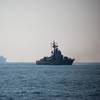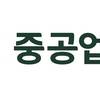The EU and the U.S. signed a mutual recognition agreement on marine equipment. Under the agreement, marine equipment certified as acceptable in the market of one party will be able to circulate in the other market without additional testing or certification. The agreement covers 30 types of marine equipment, including life-saving equipment (distress signals, rigid life rafts), fire protection equipment, and navigational equipment (GPS receivers, echo-sounding equipment).
European Union (EU) Trade Commissioner Pascal Lamy, United States (US) Trade Representative Robert B. Zoellick and Ireland's Ambassador to the US, Noel Fahey signed a mutual recognition agreement (MRA) on marine equipment between the EU and the US. The agreement will facilitate trade in this sector: equipment certified as acceptable for the market of one party will circulate in the other without the need for additional testing or certification. At the signing ceremony Pascal Lamy said: "Today's agreement is a clear example of our pragmatic approach to tearing down barriers to transatlantic trade. Through the MRA we will facilitate trade in a sector which represents EUR 1 billion worth of EU-US trade. Regulatory cooperation between us is the way forward to foster trade and investment. Now that that agreement on this item has been reached we can focus on the remaining issues under our common Positive Economic Agenda." US Trade Representative Robert B. Zoellick added: "The US-EU Marine Equipment MRA represents an important new mechanism to facilitate transatlantic trade and promote closer US-EU regulatory co-operation. This agreement saves US manufacturers the time and expense of redundant product testing for the EU market and also promotes our efforts to improve the quality of international marine safety regulations."
The EU-US MRA is intended to facilitate transatlantic trade in marine equipment. Under its terms, designated products which comply with EU requirements will be accepted for sale in the US without any additional testing or certification and vice-versa. Both parties have based their respective legislations on the Conventions of the International Maritime Organisation (IMO) and the relevant international standards.
The agreement covers 30 types of marine equipment ranging from life saving equipment (distress signals, rigid life rafts), fire protection equipment (flame retardant materials) and navigational equipment (GPS equipment, echo-sounding equipment). The agreement also contemplates expanding the product scope in the future based on the results of international regulatory cooperation. Total transatlantic trade in the sector of marine equipment amounts to around EUR 1 billion annually.
Background
Subscribe for
Maritime Reporter E-News
Maritime Reporter E-News is the maritime industry's largest circulation and most authoritative ENews Service, delivered to your Email five times per week










